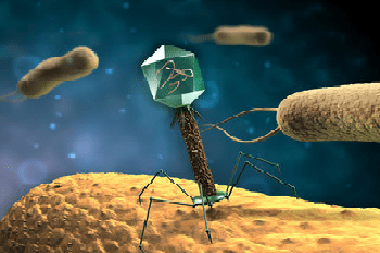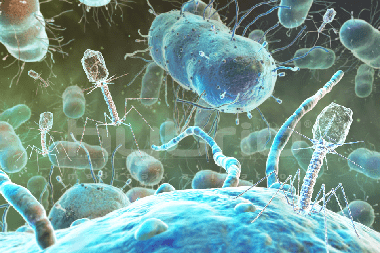General microbiology - viruses, bacteria, fungi >>>> Phage-resistance of bacteria
Phage-resistance of bacteria.

After the discovery of bacteriophages and their abilities, practical developments began: the use of bacteriophages for the treatment and prevention of infectious diseases. And it was found that the effect of the use of bacteriophages is not always positive. It turns out that some bacteria are not susceptible to bacteriophages. The interaction of a bacteriophage and a bacterium proceeds according to the scheme of the interaction of a virus with a cell in stages: adsorption, introduction, maturation and release. But in the case of bacteriophages, it turned out that in some phages there are two paths along which their further development will go when a bacterial cell is infected. First, they can lyse (dissolve) the cell membrane and further multiply. This is a lytic path of development. Secondly, phage DNA can be included in the genome of a bacterial cell without multiplying and, accordingly, without destroying it. This development path phage was named "lysogenic path of development."

The onset of the lysogenic and lytic pathways in bacteriophages is similar: upon collision with a bacterium, the phage attaches itself to a specific area of the cell surface where phage-sensitive receptors are located. These receptors are responsible for the adsorption process. Phage particles contain the enzyme lysozyme (structural and free). Structural lysozyme dissolves the bacterial cell wall prior to the introduction of the bacteriophage. Phage adsorption is followed by the stage of introduction or injection of the bacteriophage nucleic acid into the bacterial cell.
As soon as the introduction of phage DNA into the bacterial cell ends, the cell metabolism is immediately restructured, and it begins to synthesize nucleic acid and phage protein - exact copies. Further, the process of maturation of phages occurs inside the cell membrane and at a certain moment, lysed with free lysozyme from the inside, it breaks, releasing the offspring of the bacteriophage outside.
Phages that, when interacting with a cell, cause its death are called "virulent". But there are phages that lyse the cell (dissolve the membrane), infect, but do not multiply in it and do not destroy it. Such phages are called symbiotic (temperate). When a bacterium interacts with this type of phage, the nucleic acid of the bacteriophage is incorporated into the bacterial chromosome and is inherited by the bacterium during the reproduction process. Such a phage is called a prophage, and a bacterium containing a prophage is called lysogenic.
A feature of lysogenic bacteria is their resistance (resistance) to the type of phages for which they are lysogenic (that is, which they contain in the form of a prophage).
It was experimentally found that bacteria can "lose" prophages if they are affected by certain factors: ultraviolet radiation, temperature and others. The prophage enters its normal state and begins to multiply as a virulent phage. As a result, the cell is lysed by this phage, new phages are released and infect new bacteria.

Read

Read



























